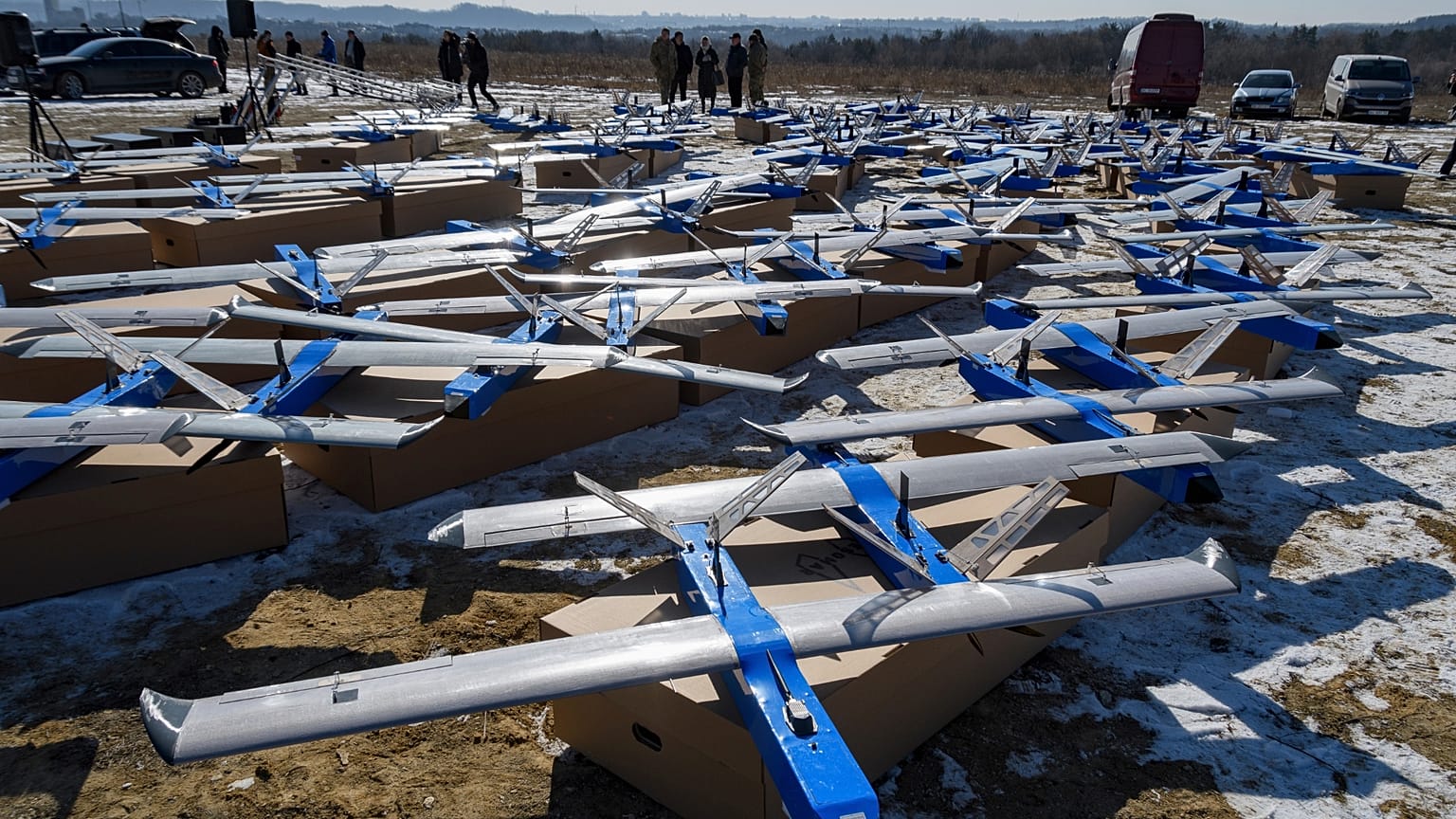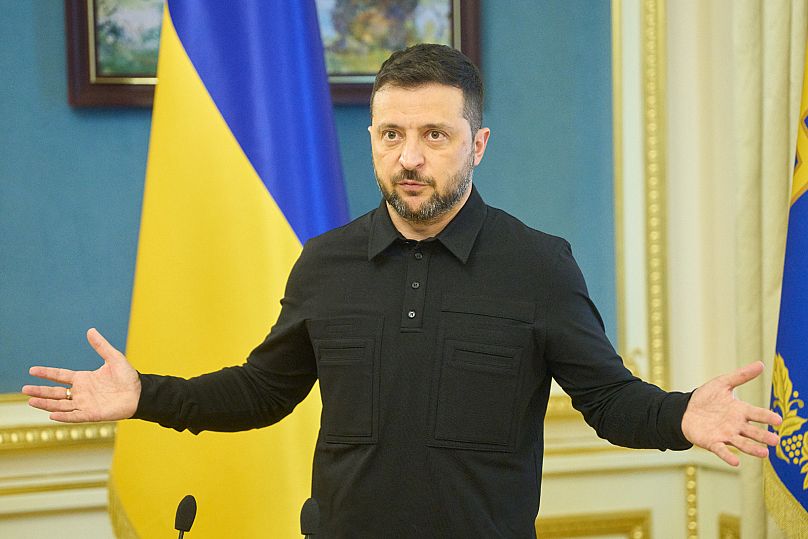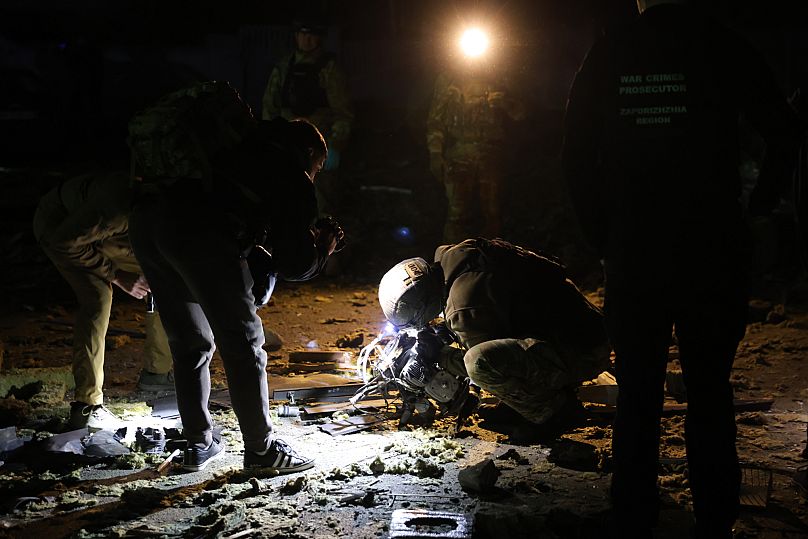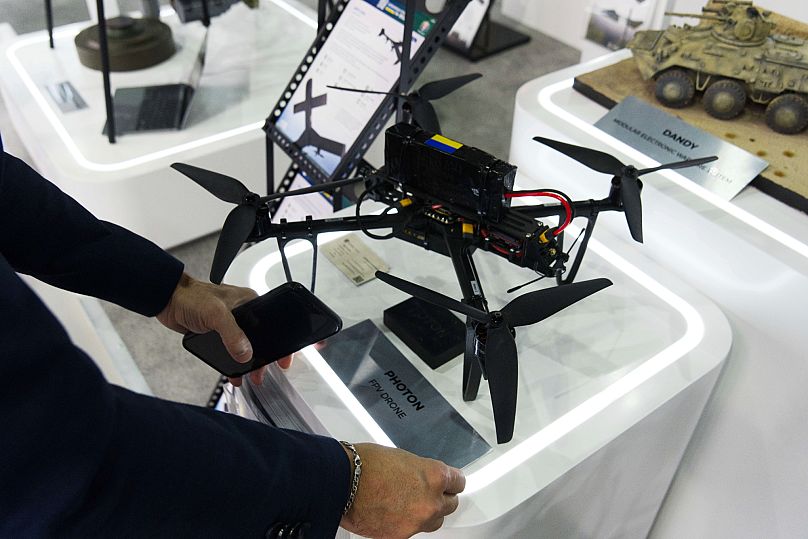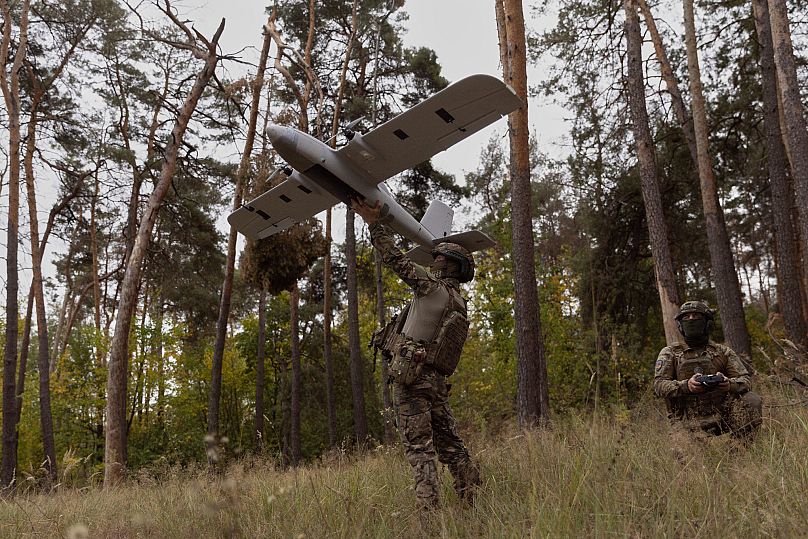Kyiv has offered to European countries to counter a string of Russian drone incursions with the experience and expertise it has gained the hard way.
Ukraine's president Volodymyr Zelenskyy said Kyiv is offering "to Poland and all our partners to build a joint, truly reliable shield against Russian aerial threats," drawing on Ukraine's battlefield experience, as EU leaders met in Denmark to discuss European defence.
Speaking at a security forum in Warsaw a day before the Denmark talks, Zelenskyy said that Ukraine's military "can counter all types of Russian drones and missiles."
Russia has used a variety of drones against Ukraine since the beginning of its full-scale invasion in 2022. The frequence and intensity of of those aerial attacks has ramped up with Moscow now firing hundreds of UAVs within a single strike.
Earlier this year, Zelenskyy said Moscow's intention is to ramp up drone attacks to 1,000 per day. "But we will intercept them all," he said.
Ukraine in now able to down around 90% of incoming Russian drones, even on days when massive barrages happen, such as 7 September when Moscow launched its largest ever attack against Ukraine, firing 810 Shahed-type drones.
"Ukraine's experience is the most relevant in Europe today and it is precisely our expertise, our specialists, and our technologies that can become a key element of future Europe's drone wall – a large-scale project that will guarantee security in the skies," Zelenskyy said on Tuesday, the same day a group from the Ukrainian military was in Denmark to share its expertise in defending against drone attacks.
Drone defence exercise
"Our group of specialists has begun deploying a mission in Denmark to share Ukraine's experience in countering drones," Zelenskyy said in a post on X.
Ukraine's General Staff stated that the "Wings of Defence" training brings together Ukrainian and Danish forces to practice countermeasures against unmanned aerial vehicles.
The exercise comes after a series of drone incursions forced temporary shutdowns at Danish airports, raising concerns over security in the country's airspace.
Poland has also turned to Ukraine for its expertise after Russian drones entered Polish airspace.
Zelenskyy said that the outcomes of the Danish mission would serve as the foundation for broader cooperation with other European countries on drone defence.
Ukraine's arms exports
Addressing the UN General Assembly earlier this month, Zelenskyy said that Ukraine will begin exporting domestically produced weapons, lifting a restriction introduced when Kyiv declared martial law at the start of the war.
Zelenskyy said Ukraine wants to show its partners that Ukrainian weapons are "reliable and modern."
"You don't have to start from scratch, we're ready to share what's already proven effective in real-world defence," he said.
The export of Ukraine's domestic weapons has been heavily restricted since the beginning of Russia's full-scale invasion, with everything rolling off the production line diverted to the war effort.
Ukrainian arms producers have been asking Zelenskyy for months to lift the restrictions on selling their domestically produced military-grade equipment, particularly drones, as a way to generate more money.
How many drones can Ukraine produce?
Ukraine's defence industry and its drone sector in particular have exploded since the beginning of the Russian invasion, representing an upgrade on its previous Soviet-era military hardware.
According to the most recent reports, Ukraine is now producing over 4 million drones annually, but has the potential to double that number with sufficient funding.
Approximately 800 arms producers are currently operating in Ukraine, with more than 200 of them producing drones.
In most cases, these are adaptable and affordable systems which have reshaped modern warfare.
In May, Ukrainian defence manufacturers issued a public letter to Zelenskyy, asking him to lift export restrictions on domestically produced military-grade equipment, particularly drones, to help the sector grow and integrate better into Europe's security architecture.
"It is time to demonstrate that Ukraine is capable of being not only a party that receives international support, but also a full-fledged partner that exports security through cooperation, technology, and its own experience," the letter read.
What European countries are particularly interested in in Ukraine's interceptor drones, which can reach speeds and heights of bigger Russian drones and cost around €4,200 per UAV. They are equipped with an explosive charge which detonates in the vicinity of a target.
During the Russian drone incursion into Polish airspace on September 10, F-35 fighter jets reportedly used AIM-9X Sidewinder missiles to intercept Russian UAVs.
Sidewinder missiles cost around €350,000 each, while Russian Gerbera drones are under €9,000.
Which countries will buy Ukrainian weapons?
First and foremost, Ukraine will begin exporting defence technologies and open weapons production lines in partner countries, Zelenskyy explained.
"The concept for three new export platforms: one for export and partnership with America, another for Europeans, and a third for global partners who have supported Ukraine in certain ways. It’s vital they also assist us so we can support them," he explained.
On 29 September a Ukrainian delegation went to the US to attend a meeting on joint drone production, the country's state broadcaster Suspline reported.
Kyiv is balancing between agreements to purchase American weapons and to export domestically produced drones.
In July, Zelenskyy said he'd reached a deal with US President Donald Trump on the sale of Ukrainian drones to the US, with the contract estimated to be worth between $10-30 billion (€8.5-25 billion).
Kyiv also signed a significant deal with US company Swift Beat to co-produce hundreds of thousands of drones this year.















